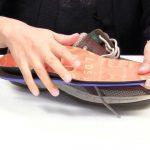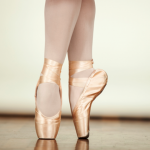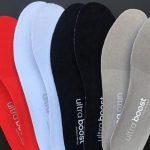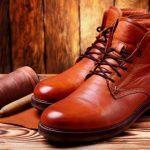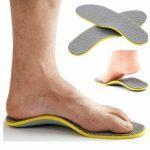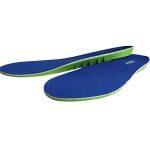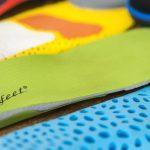Welcome to our comprehensive guide on the differences between memory foam vs gel insoles, two popular orthotic inserts designed to enhance foot comfort and support. At Savvyaboutshoes, we understand the importance of finding the right insoles for your needs, and that’s why we’re here to help you make an informed decision. The critical difference between the two insoles is that Memory foam insoles provide plush, custom cushioning, while gel insoles offer superior shock absorption and support during physical activities.
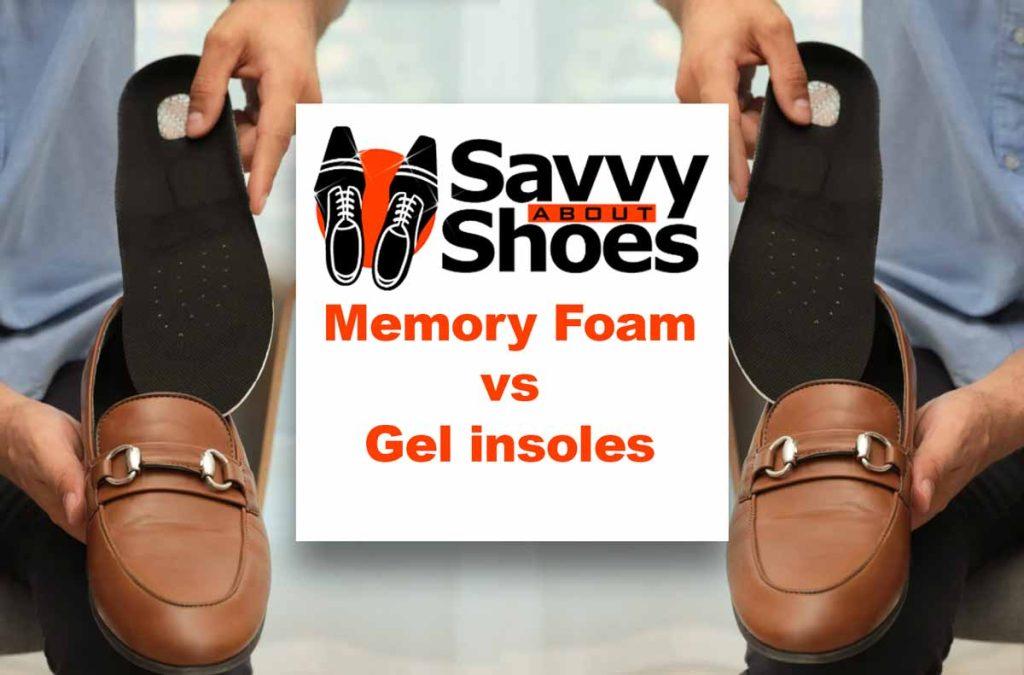
Jump immediately to the faq section
Table of content
- What are insoles and why do they matter?
- Memory Foam Vs Gel Insoles Summarized
- Should You Buy Memory Foam or Gel Insoles?
- What are Gel insoles?
- Why would I need to replace my insoles? Who can use Memory or gel insoles?
- Memory Foam vs Gel Insoles explained (video)
- Bonus: comparison of types of insole materials
- FAQ
- Conclusion
What are insoles and why do they matter?
Orthotic inserts, or insoles, are footbeds placed inside shoes to provide additional support, additional cushioning, and stability. They are especially beneficial for individuals suffering from foot conditions such as plantar fasciitis, flat feet, or high arches. By distributing pressure more evenly and promoting proper foot alignment, supportive insoles can alleviate pain and discomfort, allowing you to stay active and comfortable throughout the day.
Shoe Insoles are made from many materials, such as foam, gel, leather, and air cushions. However, this comparison is only about memory foam and gel. While both have pros and cons, whichever you purchase should depend on your needs. Let’s dive into the Memory Foam vs Gel insoles review.
Effect of insoles on shoe size and fitting
Memory Foam and Gel Insoles: A pair of insoles is usually designed to be relatively thin, and their effect on shoe size is minimal. They may slightly reduce the internal volume of the shoe, providing a snugger fit without significantly changing the overall size. (vs cork or leather insoles)
This article will first discuss the pros and cons of memory foam insoles, followed by a few examples, and then the same will be done for gel insoles. Read on to know the complete details of the differences in Memory foam vs gel insoles.
Memory Foam Vs Gel Insoles Summarized
If you want the main points of this article, all of them are summed up in a comparison style within this paragraph. If your daily activities consist of moderate walking, and you want soft, semi-rigid, and lightweight insoles, memory foam should be your choice. If your activities involve high intensity and you want durable, shock-absorbing insoles, you should opt for gel.
Comparison table of Gel Insoles and Memory Foam Insoles
| Aspect | Gel Insoles | Memory Foam Insoles |
|---|---|---|
| Comfort | Cooling effect, but may feel firmer to some users | Plush and cushioned, conforming to foot shape |
| Support | Excellent shock absorption and stability | Customized support for individual foot structure |
| Durability | Long-lasting and maintains shape | May wear out faster with heavy use over periods of time |
| Heat Retention | Cool and soothing for hot weather | May retain heat, potentially causing warmth |
| Suitability for Activities | Great for high-impact activities | Versatile for various shoe types and activities |
| Customization to Foot Shape | Less conforming compared to memory foam | Contours to foot shape for personalized support |
| Cost | Slightly higher cost than memory foam | Generally more affordable |
Should You Buy Memory Foam or Gel Insoles?
Foam-based insoles are crafted from viscoelastic foam that reacts to body heat, conforming to the shape of your foot. As your foot presses down, the foam gently molds itself to provide a custom fit and evenly distribute pressure. This unique property makes memory foam insoles incredibly comfortable and ideal for individuals seeking a plush, cloud-like feel with every step.
Benefits of Memory Foam Insoles:
- Superior Cushioning: Memory foam’s ability to conform to your foot offers unparalleled cushioning and impact absorption, reducing joint stress and preventing foot fatigue.
- Pressure Relief: By contouring to your foot’s natural shape, memory foam insoles alleviate pressure points, making them suitable for sensitive or sore feet. An extra layer of cushioning that reduces pressure can be beneficial for diabetic feet.
- Customized Support: The custom fit provided by memory foam ensures that your foot is properly supported, enhancing overall foot and body alignment.
- Versatility: Memory foam insoles can be used in various types of shoes, from athletic sneakers to formal dress shoes, without compromising their comfort and effectiveness.
Pros and Cons of Memory Foam Insoles
| Pros | Cons |
|---|---|
| Superior Cushioning | May wear out faster compared to gel insoles |
| Pressure Point Relief | Can retain heat, potentially causing warmth |
| Customized Support | May not be as effective for high-impact activities |
| Versatility | May compress over time with heavy use |
Best Memory Foam Insoles review
Firstly, there is a difference between the standard foam and memory foam inserts. Memory foam insoles mold themselves according to the curves of your foot and retain that shape, while the regular foam is generally semi-rigid. Standard foam also wears down more quickly as compared to memory foam.
The following are our top two picks for memory foam insoles:
Powerstep Pinnacle
These Powerstep insoles come with a double foam layer to provide maximum walking comfort. They are of a medical grade and hence can be used to treat symptoms of a certain foot issue. You will have complete support in your arch as the insole is semi-rigid.
This sturdiness helps in maintaining movement control. There is also a heel cradle that will shield your heel against forceful impacts.
MEGAComfort Anti-Fatigue Mat
A doctor also designs these MegaComfort insoles to target potential problem areas. In these, the arch support is soft while still providing balance.
These inserts also have silver ions infused in their top layer. These ions will help repel bacteria as well as keep your feet moisture-free.
Let’s move on in the memory foam vs gel insoles review with the gel insoles.

What are Gel insoles?
Gel is the most frequently bought type of insole. The main reason to be a popular choice, is their function of shock absorption. While walking, you usually do not notice these shocks. Various joints absorb them in your legs. But over periods of time time, that strain will build and likely cause an injury.
Benefits of Gel Insoles:
- Shock Absorption: Gel insoles absorb impact and reduce stress on your feet and joints, making them an excellent choice for athletes and those who spend long hours on their feet.
- Enhanced Stability: The responsive nature of gel material helps stabilize your feet during movement, reducing the risk of overpronation or supination.
- Cooling Effect: Gel insoles often have a cooling effect, which can be soothing for hot and tired feet.
- Long-lasting Durability: Gel insoles are known for their resilience and ability to retain their shape, even after prolonged use.
Another benefit of gel insoles is that they are widely available. You will find one that fits seamlessly regardless of your foot type or size. You also will not have to worry about the price as many different price points are available. You can buy according to your needs and budget.
Pros and Cons of Gel Insoles
| Pros | Cons |
|---|---|
| Excellent Shock Absorption | May not offer as much custom support as memory foam |
| Enhanced Stability | Some users may find them too firm |
| Cooling Effect | Limited shape conforming ability |
| Long-lasting Durability | Slightly higher cost compared to other insoles |
Best Gel Insoles review
Our top two picks for gel insoles are the following:
Dr. Scholl’s WORK Massaging Gel Advanced Insoles
If the title didn’t already convince you, I do not know what will. These insoles will massage your feet while you walk, absorbing any harmful impacts. They even have advanced arch support that will prevent you from getting fatigued.
Sof Sole ATHLETE Performance Gel Shoe Insert
Although gel insoles are considered to be weighty, these are surprisingly light. They have additional gel padding in the heel and forefoot area for extra reinforcement. They also have a moisture-wicking treatment to keep your feet dry and odorless.
Related: 6 Best Insoles for Flat Feet – Review And Buyers Guide
Why would I need to replace my insoles? Who can use Memory or gel insoles?
Replacing standard shoe insoles with gel or memory foam insoles can be beneficial in various professions and occasions where individuals experience prolonged standing, physical activity, or foot discomfort. Here are some situations where it is advisable to consider using gel or memory foam insoles:
- Athletes and Sports Enthusiasts: Gel insoles are excellent for athletes and individuals engaged in sports activities that involve high-impact movements with their athletic shoes. They provide superior shock absorption, reducing the risk of foot and joint injuries.
- Healthcare Professionals: Doctors, nurses, and other healthcare workers often spend long hours on their feet. Gel or memory foam insoles can help alleviate foot fatigue and provide additional support during demanding shifts.
- Retail and Hospitality Workers: Those working in retail, restaurants, or hospitality often stand for extended periods. Gel or memory foam insoles can enhance comfort, reducing the strain on their feet and legs.
- Construction and Labor Workers: Professionals in physically demanding jobs, such as construction workers, benefit from gel insoles’ shock-absorbing properties, as they provide additional cushioning during intense activities. Also people from the army or tactical and security jobs could use an insole replacement
- Teachers and Educators: Educators spend much of their day on their feet, moving between classrooms. Gel or memory foam insoles can offer additional comfort and support throughout the school day.
- Travelers: People who travel frequently, especially during long flights or road trips, can benefit from gel or memory foam insoles to counteract the effects of prolonged sitting and provide added comfort during travel.
- Individuals with Foot Conditions: Individuals with conditions like plantar fasciitis, flat feet, or high arches may find relief by using memory foam insoles. The customized support and pressure point relief can help manage their foot discomfort. A visit to a podiatrist will help you figure out if you need over-the-counter insoles or a pair of orthotic insoles (rather rigid insoles)
- Senior Citizens: Elderly individuals who may experience foot pain or reduced mobility can benefit from the extra cushioning and support provided by gel or memory foam insoles, enhancing their overall comfort, foot pain relief and stability.
- Fitness Enthusiasts: Whether engaging in regular workouts or walking routines, fitness enthusiasts can enhance their performance and reduce the risk of injuries by using gel or memory foam insoles.
- Casual and Dress Shoes: Gel and memory foam insoles are versatile and can be used in various types of footwear, including casual and dress shoes, to add extra comfort and support throughout the day.
Memory Foam vs Gel Insoles explained (video)
Bonus: comparison of types of insole materials
Here’s a comparison table of memory foam, gel, leather, cork, and PU (polyurethane) types of insoles, along with their specifications and recommended brands:
| Type of Insole | Material | Comfort Level | Support | Durability | Brand Names |
|---|---|---|---|---|---|
| Memory Foam insoles | Viscoelastic Foam | Plush, Cloud-like Feel | Customized Support | Moderate to High | Dr. Scholl’s, Superfeet |
| Gel insoles | Gel | Excellent Shock Absorption | Stability | Long-lasting | Spenco, Powerstep |
| Leather insoles | Genuine Leather | Natural and Breathable | Good Support | High (with Proper Care) | Vionic, Pedag |
| Cork insoles | Cork | Contours to Foot Shape | Arch Support | Moderate to High | Birkenstock, HappyFeet |
| PU inoles (Polyurethane) | Polyurethane | Cushioned Support | Long-lasting | High | Sof Sole, ProFoot |
Frequently Asked Questions (FAQ)
What are Memory Foam Insoles?
Memory foam insoles are orthotic inserts made from viscoelastic foam that responds to body heat and pressure, conforming to the foot’s shape for a custom fit. They offer superior cushioning, distributing pressure evenly and reducing stress on joints.
What are Gel Insoles?
Gel insoles are orthotic inserts crafted from a gel-like material that provides advanced shock absorption and support. The gel evenly distributes pressure, offering responsive cushioning and stability during physical activities.
Which is More Comfortable: Memory Foam or Gel Insoles?
Both memory foam and gel insoles offer comfort, but the choice depends on individual preferences. Memory foam insoles provide a plush, cloud-like feel, while gel insoles may feel firmer to some users but excel at shock absorption.
Are Memory Foam Insoles Customizable?
Memory foam insoles conform to the foot’s natural shape, providing customized support and pressure point relief. This feature makes them suitable for individuals with specific foot structures and conditions.
Which Insoles are More Durable?
Gel insoles are known for their long-lasting durability and ability to retain shape even after prolonged use. On the other hand, memory foam insoles may wear out faster with heavy use.
Are Gel Insoles Suitable for High-Impact Activities?
Gel insoles excel at shock absorption and stability, making them an excellent choice for high-impact activities and athletes seeking to reduce stress on their feet and joints.
Can Memory Foam Insoles Retain Heat?
Yes, memory foam insoles may retain heat, potentially causing warmth. Individuals who prefer cooling effects may find gel insoles more suitable, especially in hot weather conditions.
Conclusion
What is best: memory foam vs gel insoles? The answer is: it depends on your preferences and activity. In summary, memory foam and gel insoles offer significant benefits and can significantly improve your overall foot comfort and support. I recommend assessing your needs and preferences to make the best foot choice. Whether you opt for the cloud-like comfort of memory foam or the advanced support of gel insoles, investing in high-quality orthotic inserts will surely keep your feet happy and healthy, enabling you to stay on your feet confidently and easily.
Related insoles size charts
- Insoles for Nurses: Enhancing Comfort and Foot Health
- Best Heated Insoles
- Memory Foam Vs Gel Insoles
- Best Insoles for Shin Splints
- Best Insoles for Ball of Foot Pain
- Best Insoles for Military Boots
- Best Insoles for Shoes that are too Big
- Best Thin Insoles
- Best Memory Foam Insoles
- Best Insoles for Morton’s Neuroma
- Adidas Insole Replacement: What is the best insole for Adidas?
- Best Insoles for Hiking
- Best Insoles for Dress Shoes
- Insole Replacements for Hoka Shoes: Best inserts
- Best Insoles for Medical Professionals Standing all-day
- Best Insoles for High Arches to support your feet
- Memory Foam vs Latex Insoles: Which material is best?
- Best High-Volume Insoles












